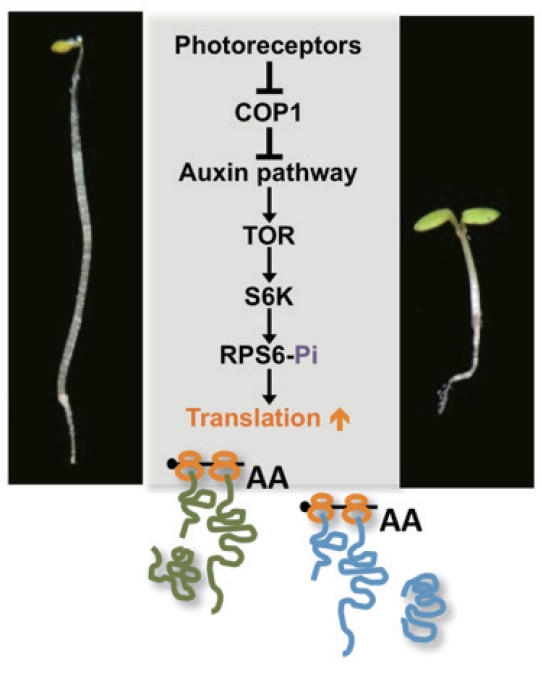Target of Rapamycin (TOR) and Ribosomal Protein S6 (RPS6) Transmit Light Signals to Enhance Protein Translation in De-etiolating Arabidopsis Seedlings
We showed that light-enhanced translation is orchestrated by a light perception and signaling pathway composed of photoreceptors, CONSTITUTIVE PHOTOMORPHOGENESIS 1 (COP1), the phytohormone auxin, target of rapamycin (TOR) and ribosomal protein S6 (RPS6). In de-etiolating Arabidopsis seedlings, photoreceptors including phytochrome A and cryptochromes perceive far-red and blue light to inactivate the negative regulator COP1, which leads to the activation of the auxin pathway for TOR-dependent phosphorylation of RPS6. Arabidopsis mutants defective in TOR, RPS6A or RPS6B exhibited delayed cotyledon opening. Cotyledon opening is a characteristic of the deetiolating process to ensure timely vegetative development of a young seedling. This study provides a mechanistic view of light-triggered translational enhancement in deetiolating Arabidopsis. This sophisticated regulation also functions to ensure that young seedlings have a strict skotomorphogenic development in the dark and a timely switch to photomorphogenic development.
Proceedings of the National Academy of Science of the United States of America 115 (2018): 12823-12828.
DOI: 10.1073/pnas.1809526115
